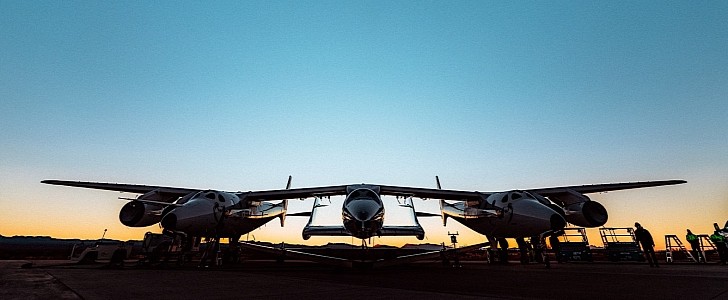Shooting man and machine into space is dangerous business, no matter how you do it, and things don’t always go according to plan. Still, for the space exploration business, failure is a part of the deal, perhaps even more so than in other human activities.
For a while now, Virgin Galactic has been trying to send people to space from New Mexico, making the state part of the select few to have done this. At first, the launch was delayed on account of the new health restrictions adopted locally at the end of November. Then, when it finally went up, it failed.
You see, the same health restrictions made Virgin conduct the test with a skeleton crew and no guests or media on-site. The test took place three days ago, on December 12, but because it was held behind closed doors, we’re only now learning it failed.
Virgin officially announced the test flight did not reach space as planned, but the two pilots, CJ Sturckow and Dave Mackay, managed to safely return themselves and their ship, the VSS Unity, back on the ground.
VSS Unity is designed to fly to the edge of space about 50 miles (80 km) high. It takes off horizontally at 50,000 feet (15 km) from the underbelly of its carrier plane, VMS Eve. At least that’s the theory, one that worked a couple of times in the past. Only now, the “rocket motor did not fire due to the ignition sequence not completing,” Virgin said.
The company says it is now looking into the whys and hows of the failure. It already found that “the onboard computer which monitors the propulsion system lost connection, triggering a fail-safe scenario that intentionally halted ignition of the rocket motor.”
Those must have been some scary moments on the ground in New Mexico’s Spaceport America. Back in 2014, the previous Virgin ship, VSS Enterprise, crashed as a result of human error, killing the co-pilot.
This month's failed flight was supposed to test the spaceship some more, but also conduct experiments on behalf of NASA. Virgin did not say when it plans on going back up there.
You see, the same health restrictions made Virgin conduct the test with a skeleton crew and no guests or media on-site. The test took place three days ago, on December 12, but because it was held behind closed doors, we’re only now learning it failed.
Virgin officially announced the test flight did not reach space as planned, but the two pilots, CJ Sturckow and Dave Mackay, managed to safely return themselves and their ship, the VSS Unity, back on the ground.
VSS Unity is designed to fly to the edge of space about 50 miles (80 km) high. It takes off horizontally at 50,000 feet (15 km) from the underbelly of its carrier plane, VMS Eve. At least that’s the theory, one that worked a couple of times in the past. Only now, the “rocket motor did not fire due to the ignition sequence not completing,” Virgin said.
The company says it is now looking into the whys and hows of the failure. It already found that “the onboard computer which monitors the propulsion system lost connection, triggering a fail-safe scenario that intentionally halted ignition of the rocket motor.”
Those must have been some scary moments on the ground in New Mexico’s Spaceport America. Back in 2014, the previous Virgin ship, VSS Enterprise, crashed as a result of human error, killing the co-pilot.
This month's failed flight was supposed to test the spaceship some more, but also conduct experiments on behalf of NASA. Virgin did not say when it plans on going back up there.

